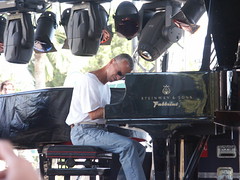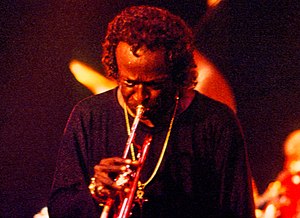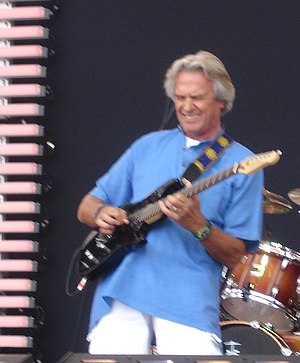Review: Bobby Hutcherson celebrates 70th at Yoshi's - San Jose Mercury News
By Jim Harrington
Oakland Tribune
Posted: 01/28/2011 12:40:54 AM PST
Updated: 01/28/2011 12:40:55 AM PST
Bobby Hutcherson is the greatest living Bay Area jazz musician.
And there really isn't a close second -- at least not if one of the qualifications is that the musician must still reside in the Bay Area, which would eliminate such local-born players as Dave Brubeck and Pete Escovedo.
The Montara resident, who has lived in the same home on the San Mateo County coast since 1972, is without compare on the local scene when it comes to many significant categories, including strength of songbook, longevity at the top of the jazz scene and influence on the genre. He's also one of the top practitioners on his chosen instrument -- the vibraphone -- to have ever lived.
Take his residence out of the equation -- and just consider him as part of the world's jazz community -- and he still would stand tall among the genre's greatest names.
"McCoy Tyner called him the world's greatest improviser," remarks Yoshi's Oakland artistic director Peter Williams, recalling a statement made by the legendary pianist. "And I'd have to agree. There are very few people with a lineage like him left in jazz."
All of that factored into Hutcherson's concert on Thursday -- the first half of a two-night stand -- at the East Bay club. It was more than just a regular show — it was a celebration of a lifetime of tremendous music. For this Thursday show marked Hutcherson's 70th birthday.
The set began with the crowd singing an impromptu version of "Happy
Birthday," and ended with Williams delivering a chocolate birthday cake to the vibraphonist onstage. In between, Hutcherson and his splendid band played eight songs that illustrated why the bandleader is such a treasure.
Hutcherson, granted, isn't the force that he once was. His battle with emphysema — which requires him to be hooked up to oxygen while onstage — has severely affected his energy level, limiting both his hand speed and the length of his solos. Still, Hutcherson — even at far less than 100 percent — remains several times the musician as just about any other vibraphonist on the planet. He's still possesses impeccable timing and a sense of "touch" that most can only dream about.
Plus, he was smart enough to stock his band with agile players -- guitarist Anthony Wilson, pianist Joe Gilman, bassist Glenn Richman and drummer Eddie Marshall -- so that no one left Yoshi's in want of fireworks.
Hutcherson, who remains best known for the boundary-stretching jazz he recorded as part of the Blue Note roster in the '60s, opened the show with a fairly new composition, the up-tempo "Teddy." He followed with "Ode to Angela," allowing Wilson to take the spotlight as Hutcherson beamed with that big, beautiful smile of his.
Not surprisingly, given his medical condition, Hutcherson did most of his best work on the slow tunes. In particular, he delivered an exquisitely soft run at the start of the ballad "(I Love You) For Sentimental Reasons," the title track from his 2007 album, while Marshall provided deft accompaniment with his brushes on the drums.
The one exception to that rule came during the standard "Old Devil Moon," when Hutcherson emptied the tanks and energetically walloped his vibraphone with his two mallets in a fashion that left everybody in the house breathless.
The music made, however, is only one part of the Bobby Hutcherson story. He's equally cherished -- and, boy, this is refreshing -- for being one of the nicest players in the music business. Indeed, Randall Kline, executive director of SFJAZZ, once called Hutcherson the "classiest act in jazz."
"The first concert that we did with Bobby was, I think, 1986," Kline said. "He's a brilliant artist, an absolute master on his instrument, and just a really sweet person, which comes across on the bandstand."
After closing the set with an up-tempo version of "Pomponio," Hutcherson seemed truly touched as Williams brought out his birthday cake. Even though the Cake had far less than 70 candles on it, Hutcherson still needed Williams' help to blow out them all out. He then looked out at the crowd -- in full standing ovation -- and commented on the occasion.
"When I was a young whippersnapper, I didn't think I would make it to 40," he said. "I'm going to slow down (playing music), so I can get my health together."
We wish you the best, Bobby, and look forward to celebrating more birthdays with you in the years to come.
















